Catalogue > Liste par artiste
Parcourez la liste complète des artistes présentés dans le cadre des Rencontres Internationales depuis 2004. Utilisez le filtre alphabétique pour affiner vos recherches.
Mathieu K. Abonnenc
Catalogue : 2016Secteur IX B | Fiction | 4k | couleur | 42:35 | France | 2015
Mathieu K. Abonnenc
Secteur IX B
Fiction | 4k | couleur | 42:35 | France | 2015
Secteur IX B met en scène la conservation d’une collection anthropologique ramenée la Mission Dakar-Djibouti, une des plus grande opération de collecte coloniale, à travers une relecture de l’ouvrage L’Afrique fantôme de Michel Leiris. Par son dispositif, tourné entre la France et le Sénégal, le film dévoile le destin et la mémoire d`archives par un récit fantasmé, qui désigne un état des relations entre les peuples.
Mathieu Kleyebe Abonnenc s’attache à interroger les formes d’hégémonie culturelle sur lesquelles s’est appuyée l’évolution de nos sociétés contemporaines. Qu’il s’agisse de vidéos, de photographies, d’installations, de dessins ou de projets d’exposition, Mathieu Kleyebe Abonnenc explore les principes de représentation dominants en s’appropriant des éléments et des événements préexistants, principalement liés aux histoires impériales et coloniales des pays dits développés. Autant d’objets appartenant à une mémoire collective dont l’universalisme de principe est mis à l’épreuve depuis plus d’un siècle. Chacun de ces éléments nécessite d’être constamment renégocié afin d’en dégager des problématiques contemporaines, en termes de construction d’une identité, d’une communauté, d’une nation, et ainsi permettre par moment de réinventer l’action artistique et politique. Mathieu Kleyebe Abonnenc est diplômé des Beaux-arts de Marseille en 2002. Il a fait parti du programme de recherche La Seine de l’Ecole Nationale supérieure des Beaux-arts de Paris de 2006 à 2008 . Son travail à fait l’objet en 2013 de deux expositions personnelles, Songs for a Mad King à la Kunsthalle de Bâle, Suisse et Kannibalen au Bielefelder-Kunstverein, Allemagne. En 2012, deux institutions, la Fondation Serralves à Porto au Portugal et Pavilion à Leeds en Angleterre, ont organisé des expositions personnelles de l’artiste. Toujours en 2012 , Mathieu Kleyebe Abonnenc a participé à la Triennale de Paris, Intense Proximité, au Palais de Tokyo, ainsi qu’à des expositions collectives à la Fondation d’entreprise Ricard à Paris et l’ICA – Institue d’Art Contemporain de Philadelphie aux États-Unis.
Yasmine Kabir
Catalogue : 2011The Last Rites | Documentaire | dv | couleur | 17:0 | Bangladesh | 2008
Yasmine Kabir
The Last Rites
Documentaire | dv | couleur | 17:0 | Bangladesh | 2008
` The Last Rites?, a silent film by Yasmine Kabir, depicts the ship breaking yards of Chittagong- a final destination for ships that are too old to ply the oceans any longer. Every year, hundreds of ships are sent to yards in Bangladesh. And every year, thousands of people come to these yards in search of jobs. Risking their lives to save themselves from hunger, they breathe in asbestos dust and toxic waste. The elemental struggle between man and metal figures throughout the film, as men carry the weight of steel ropes over their shoulders, pull huge parts of the vessels inland, and bear great metal plates. ` The Last Rites? is an allegorical portrayal of the agony of hard labor.
Yasmine Kabir is an independent filmmaker based in Bangladesh. Her filmography includes: Death Chant 1992 A day at the Embassy 1996 For Solaiman 1997 A Mother`s Lament (Duhshomoy) 1999 My Migrant Soul (Porobashi Mon Amar) 2000 Direct-Direct (Music Video) 2003 A Certain Liberation (Shadhinota) 2003 The Last Rites (Shesh Kritto) 2008
Jane Jin Kaisen
Catalogue : 2023Halmang | Vidéo | 4k | couleur | 13:13 | Danemark, Coree du Sud | 2023
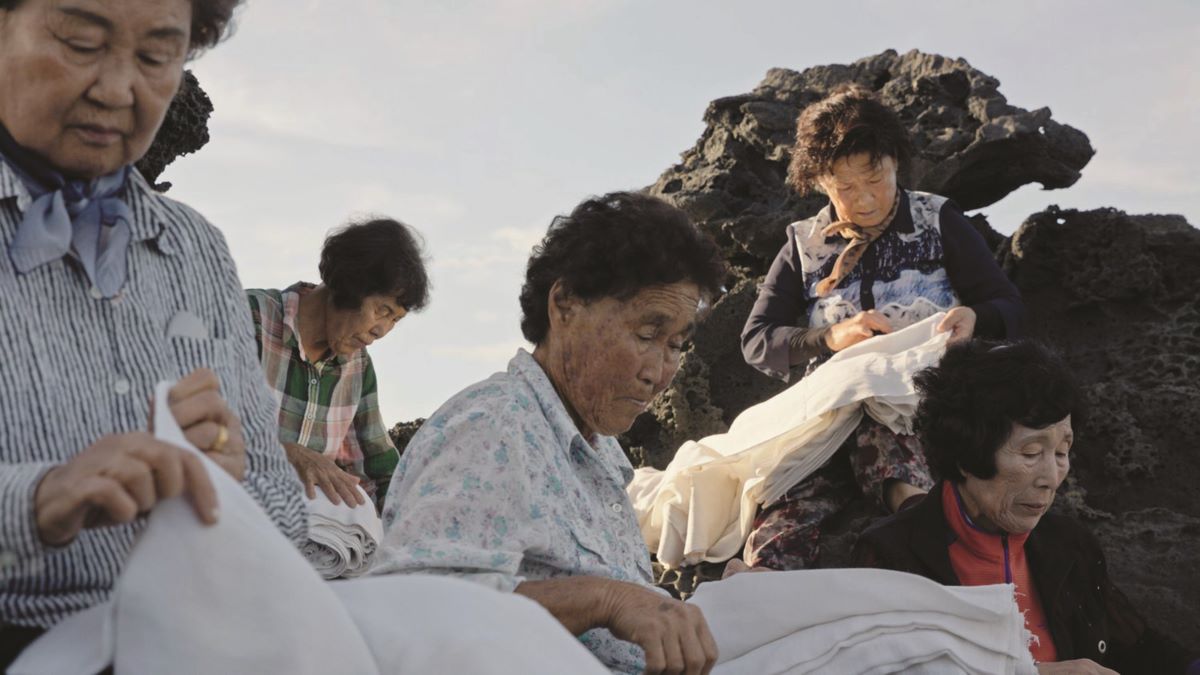
Jane Jin Kaisen
Halmang
Vidéo | 4k | couleur | 13:13 | Danemark, Coree du Sud | 2023
Halmang revolves around a group of eight women in their 70s and 80s. It is filmed by the coast of Jeju Island near a lava rock islet that used to serve as a shamanic shrine for the wind goddess Yongdeung Halmang. The women, who have worked and made a living together for most their lives as haenyeo sea divers, used to depart together for the sea from this very location. The title Halmang refers to this spiritual aspect as shamanic goddesses in Jeju are referred to as ‘halmang’ while also being the Jeju term for ‘grandmother’ and a respectful form of address for a woman. It was also from this area that Kaisen’s grandmother during her lifetime used to depart for the sea as a haenyeo sea diver. The film portrays the aging women’s lived experience, their community and spirituality connected to the sea, the wind and the island. Central to the work is its focus on the collective use and care for sochang; a white, long cotton cloth associated with female labor and a symbol of cycle of life and death and humans’ connection to the spirit world. The camera carefully registers their hands, gestures, and facial expressions as they meticulously tend to the fabric. As the piece unfolds, they start connecting the long rolls of sochang until it comes to form a large spiral enveloping the black lava rocks. The music is produced by Lior Suliman (also known as Dub Mentor) and is comprised of layers of on-site recordings, looped, interleaved and treated to create an immersive sound experience. It also features The Song of the Haenyeos by Gang Gyung Ja and Song of Haenyeo Preservation Association.
Jane Jin Kaisen is an artist, filmmaker, and Professor of the School of Media Arts, The Royal Danish Academy of Fine Arts. Spanning the mediums of video installation, experimental film, photography, performance, and text, her work is informed by extensive interdisciplinary research and long-term engagement with minoritarian communities. She is known for her visually striking, multilayered, performative, poetic, and multi-voiced feminist works through which past and present are brought into relation. Engaging topics such as memory, migration, borders, and translation, she activates the field where lived experience and embodied knowledge intersect with larger political histories. Kaisen is a recipient of is a recipient of the New Carlsberg Foundation Artist Grant (2023) and a 3-year work grant from the Danish Arts Foundation (2022) and awarded Exhibition of the Year 2020 by International Association of Art Critics, Denmark for the exhibition Community of Parting at Kunsthal Charlottenborg. She represented Korea at the 58th Venice Biennale and has exhibited and screened her artworks and films in a wide range of contexts internationally.
Jane Jin Kaisen
Catalogue : 2023Burial of this Order | Film expérimental | 4k | couleur | 25:12 | Danemark, Coree du Sud | 2022

Jane Jin Kaisen
Burial of this Order
Film expérimental | 4k | couleur | 25:12 | Danemark, Coree du Sud | 2022
A procession of non-conforming people – from musicians, artists and poets to anti-miliary activists, environmentalists and diasporic, queer and trans people – carry a coffin together through the ruins of what turns out to be an abandoned resort on the South Korean island of Jeju. It soon becomes clear that this is no traditional Confucian funeral. Age and gender roles are subverted, the coffin is draped in dark camouflage colours and the traditional portrait of the deceased is replaced by a black mirror. In the field between funeral ritual, political protest and carnival performance, the people in the procession who have come together to undo a world order built upon hierarchy and division, march through the ruins of capitalist modernity. Time and place begin to lose their stability as mythical Dokkaebi deities pass through the building and heavy rain and wind blow through its cavities. As if possessed the group, in a moment of revolutionary fervour, overthrows and dismantles the scaffolding of the prevailing order and other stories begin to take form. Jane Jin Kaisen’s interdisciplinary work not only activates Jeju’s violent history as a site of oppression and rebellion, but is a work with universal power.
Jane Jin Kaisen (born 1980 in Jeju Island, lives in Copenhagen) is a visual artist, filmmaker, and Professor of the School of Media Arts, The Royal Danish Academy of Fine Arts. Spanning the mediums of video installation, narrative experimental film, photographic installation, performance, and text, Kaisen’s artistic practice is informed by extensive interdisciplinary research and engagement with diverse communities. She is known for her visually striking, multilayered, performative, poetic, and multi-voiced feminist works through which past and present are brought into relation. Engaging topics such as memory, migration, borders, and translation, she activates the field where lived experience and embodied knowledge intersect with larger political histories. Through multi-year projects and collaborations, she has engaged topics such as transnational adoption, the Korean War and division, the Jeju April Third Massacre, and Cold War legacies. Another recurring focus revolves around nature and island spaces, cosmologies, feminist re-framings of myths, and engagement with ritual and spiritual practices. Working from the thresholds of mediums and forms, disciplines and sensibilities, her works negotiate and mediate the means of representation, resistance, and recognition, thus contouring alternative genealogies and sites of collective emergence. Kaisen is a recipient of the New Carlsberg Foundation Artist Grant (2023) and a 3-year work grant from the Danish Arts Foundation (2022). She represented Korea at the 58th Venice Biennale with the film installation Community of Parting (2019) alongside artists Hwayeon Nam and siren eun young jeong in the exhibition History Has Failed Us, but No Matter curated by Hyunjin Kim. She was awarded “Exhibition of the Year 2020” by AICA - International Association of Art Critics, Denmark for the exhibition Community of Parting at Kunsthal Charlottenborg. Kaisen has participated in the biennials of Liverpool, Gwangju, Anren, Jeju, among others. Recent solo exhibitions include Jane Jin Kaisen: Braiding and Mending at The Image Centre (2023), Of Specters or Returns at Le Bicolore (2023), Currents at Fotografisk Center (2023) Parallax Conjunctures at Museum of Contemporary Art Detroit (2021), Community of Parting at Art Sonje Center (2021) and Kunsthal Charlottenborg (2020). Other recent exhibitions and screenings: Dislocation Blues: Jane Jin Kaisen, Tate Modern (2023), Ceremony (Burial of an Undead World), Haus der Kulturen der Welt (2022), Checkpoint: Border view from Korea, Kunstmuseum Wolfsburg (2022), Unmoored Adrift Ashore, Or Gallery Vancouver (2022). She holds a PhD in artistic research from the University of Copenhagen, Department of Art and Cultural Studies, an MFA in Interdisciplinary Studio Art from the University of California Los Angeles, an MA in Art Theory and Media Art from The Royal Danish Academy of Fine Arts, and she participated in the Whitney Museum of American Art Independent Study Program. Other exhibition and screening venues include: Kunsthal Aarhus, Nikolaj Contemporary Art Center, The National Museum of Photography (DK), Haus der Kulturen der Welt, Berlinale, Kunstmuseum Wolfsburg, Times Art Center, Museum Ludwig, Videonale (DE), Asian Art Museum, Museum of Contemporary Art Los Angeles, Gana Art New York, DePaul Art Museum (USA), ARKO Art Center, Seoul Museum of Art, Incheon Art Platform, Seoul New Media Art Festival, Leeum Samsung Museum of Art, Asia Culture Center, Coreana Museum of Art, DMZ International Documentary Film Festival (KR), Silencio Club, Palais de Tokyo, Foundation Fiminco (FR), Malmö Konstmuseum, Malmö Konsthall, Inter Arts Center, Kalmar Art Museum (SE), Sørlandet Art Museum and Oslo Kunstforening (NO), Finnish Museum of Photography (FN), ParaSite (HK), Kyoto Arts Center, Kyoto Museum of Art, Fukouka Museum of Art, Yamagata International Documentary Film Festival, (JP), Times Museum Guangzhou, Beijing 798 Art Zone (CN), Kaohsiung Museum of Fine Art, Taiwan International Documentary Film Festival (TW), Museum of Contemporary Art and Design (PH), The National Gallery (Indonesia), and Townhouse Gallery (EG).
Leilani Kake
Catalogue : 2012Tino Rangatira Tanga | Documentaire | dv | couleur | 16:6 | Nouvelle-Zélande | 2008

Leilani Kake
Tino Rangatira Tanga
Documentaire | dv | couleur | 16:6 | Nouvelle-Zélande | 2008
Maranga mai Wake up Maranga mai e te iwi Rise up the people O nga hapu Ngapuhi of the families of Ngapuhi Ki a mau, ki a u,ki a pupuri ai be strong,be fixed,hold on ki nga akoranga nui to the larger lessons "My very first memory of my Dad actually has no visual label but is made up of Sound, the warm soundscape of him singing as he strums the guitar, his voice booms over the acoustic harmonies of the strings. His mouth smiles as he sings a verse, his hands strums with vigor. I am safe in his song. On the night of the seventeenth of April 2008 my father Richard Kake passed away in Whangarei Hospital after suffering a massive stroke, he was fifty seven years old." Tino Rangatira Tanga invites the viewer into a sacred space of Love, loss and revelation. "It is a celebration of my relationship with my Father told through deeply intimate experiences strengthened through the musical soundscape that surrounded my Father?s life and death. The process of filming,editing and viewing the footage of my father?s life and untimely death helped me to grieve and in turn heal. Being able to experience and share this work has created moments of personal growth and insight. "
Kia Ora and Warm Pacific Greetings, My name is Leilani Kake, I live in Otara, Manukau City, South Auckland,Aotearoa(New Zealand) and I am a practicing Video Installation Artist of Nga Puhi, Tainui (NZ Maori) and Manihiki (Cook Island) descent. I graduated with the University of Auckland at the Manukau School of Visual Arts with a Bachelor of Visual Arts in 2002 and a Post Graduate Diploma of Fine Arts in 2005. My work transfers documentary footage and the recording of real events into an art context. My projects tend to be highly personal stories dealing with issues of identity and culture, tradition and change. Insight: ?Raising awareness of important issues pertaining to myself, Tangata Whenua(New Zealand Maori) and Pacific people in a way that creates constructive discussion has always been the main focus of my art.?
Kai Kaljo
Catalogue : 2018Isegi nimi on mõnikord sama (Even the Name Is Sometimes the Same) | Vidéo | hdv | couleur | 1:55 | Estonie | 2017
Kai Kaljo
Isegi nimi on mõnikord sama (Even the Name Is Sometimes the Same)
Vidéo | hdv | couleur | 1:55 | Estonie | 2017
Among others, Kai Kaljo(1877-1906) lives on in my video "Even the Name is Sometimes the Same"(1877-2017). I don´t know if we are related or not, but does it really matter? The video was made in cooperation with the photo collection of the Tallinn town museum. In the corner of a very old photograph (made in 1877) of the Tallinn Old Town Harbor, there is a person sitting, very tired. For some unknown reason, I was overwhelmed by that person. She (or he) had no idea that photography existed so she never suspected being accidentally captured by someone´s camera, neither did she suspect that, for some reason, she would become so important for somebody after 140 years.
Kai Kaljo is an artist living and working in Tallinn, Estonia. She studied painting at the Estonian Academy of Arts. Since 1997, when she completed her first video "Loser", she mainly works in video. In 2006 and 2017, she used to work at Tallinn University as a professor for contemporary art. Her video work was often described as poetic, social, humorous/tragic. In recent years, she had been working with archival images and texts.
Catalogue : 2006AEG | Vidéo expérimentale | super8 | couleur | 1:0 | Estonie | 2005

Kai Kaljo
AEG
Vidéo expérimentale | super8 | couleur | 1:0 | Estonie | 2005
Jade Kallio, Remi Vesala
Catalogue : 2025Laava | Vidéo | 4k | couleur | 15:0 | Finlande | 2024

Jade Kallio, Remi Vesala
Laava
Vidéo | 4k | couleur | 15:0 | Finlande | 2024
Lava is a love letter to things that cannot be written about: love, exciting piles of twigs, longing, a disappearing landscape, memories you can’t trust. Either writing hurts, or it is impossible to find the words. Lava is a continuation of the working group’s previous work Magma (2020). Both works deal with human relationships and ecology. The wishes for transformation, non-monogamy and boundless love, which were still partially smouldering under the surface, erupt in Lava, a video dealing with the end of a relationship.??
Jade Kallio is working with a variety of media including experimental cinema, performance and installation art. Their personal and collaborative works mix speculative fiction with everyday life. Kallio's works have been presented at festivals and institutions such as Europian Media Art Festival (2019, 2017), Beursschouwburg Art Center Brussels (2019), Kunsthalle Osnabrueck (2019), International Film Festival Rotterdam (2019, 2017), CCA derry (2016), HAM gallery (2017), Turku Art Museum (2017), Gallery Sinne (2017).
Mumtoz Kamolzoda
Catalogue : 2009Nikoh | Doc. expérimental | dv | couleur | 3:37 | Tadjikistan | 2007
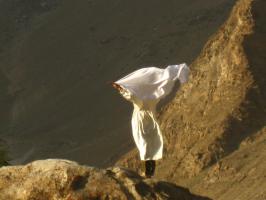
Mumtoz Kamolzoda
Nikoh
Doc. expérimental | dv | couleur | 3:37 | Tadjikistan | 2007
Sur le toit du monde (Pamir) est l?une des plus anciennes cérémonies que l?on connaisse. Une femme désire ardemment se marier, mais son mari meurt avant. Le prochain homme qui s?éprendra d?elle devra se montrer prudent avant de prendre une telle femme. Elle devra d'abord se marier à un arbre. La mariée, au moment convenu, va à l'arbre où sa famille prépare la cérémonie du mariage. Alors que les hôtes se divertissent, la mariée reste pendant un moment avec son nouveau conjoint-arbre. Conformément à la tradition, après un tel mariage, la personne est sauvée. La femme ne pourra se remarier que lorsque l'arbre aura séché. Si jamais l?arbre continue à reverdir, la femme devra se marier avec un autre arbre jusqu'à ce que ses proches obtiennent le résultat voulu. Par le biais de ces cérémonies antiques, la femme est libérée des mauvais esprits.
Mumtoz Kamolzoda est né au Tadjikistan. Il a étudié la peinture à l?école des Beaux-Arts auprès de M. Olimov de 1996 à 1999 puis de 2003 à 2008, la linguistique et la communication interculturelle à l?Université Slave Russo-tadjik. En 2006-2007, il étudie le chinois à l?Université des Langues et de la Culture de Pékin (Chine) et, en 2008-2009, la culture indienne à l?Université de Delhi (Inde).
Behnam Kamrani
Catalogue : 2009endurance | | dv | couleur | 3:44 | Iran | 2006
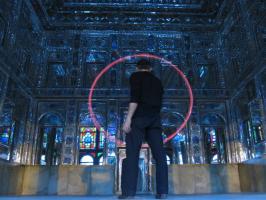
Behnam Kamrani
endurance
| dv | couleur | 3:44 | Iran | 2006
Une chambre dans la maison qajarid d?une femme (Zinat-ul-Molk). Un atelier de miroir brillant dans la nuit comme un ciel étoilé. Malgré son ambiguïté, la relation entre l?homme et la femme dans la pièce indique les tensions qui suivent une rupture. La femme en blanc peut aussi être considérée comme un esprit ou comme la tension qui reste après les virages et les brûlures.
Né en 1968 à Shiraz (Iran), Behnam Kamrani obtient sa licence à l?Université des Beaux-Arts de Téhéran (Iran) en 1995 avant de poursuivre ses études en Master (1999) puis en doctorat à l?Université des Arts.
Bidzina Kanchaveli
Catalogue : 20087 ½ Frauen | Fiction expérimentale | 16mm | couleur | 9:30 | Georgie, Allemagne | 2005
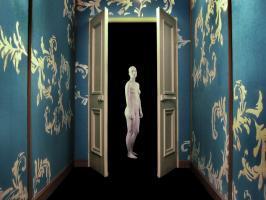
Bidzina Kanchaveli
7 ½ Frauen
Fiction expérimentale | 16mm | couleur | 9:30 | Georgie, Allemagne | 2005
L'une après l'autre, sept femmes, toutes nues et d'une pâleur maladive, veulent pénétrer le monde claustrophobique d'un homme qui a juste assez d'espace pour lui-même et une oie. Ondulant amoureusement et maladroitement ou dansant, elles essaient en vain d'atteindre les toilettes, tandis que l'homme semble se désespérer de cette intrusion féminine.
Bidzina Kanchaveli est né en 1974 à Kutaisi, en Géorgie. Depuis 2000, il vit en Allemagne. A l'âge de vingt ans, il met en scène avec succès sa première pièce, "At first was the word". Il réalise encore quatre autres pièces qui reçoivent la reconnaissance du public. En 1999, il réalise son premier court-métrage, "Novice No21", qui trouve une résonance impressionnante dans divers festivals européens, notamment au festival du film noir de Rome. "Novice No21" a représenté la Géorgie aux Academy Awards en 2000. Sur invitation de la Ludwigsburg film school en Allemagne, SWR Channel et Arte, il réalise son court-métrage suivant "71⁄2 women?. Kanchaveli travaille actuellement sur un nouveau projet, un film de science-fiction sur une humanité, avant le stade de l'homo sapiens, qui vivrait une nouvelle étape de l'évolution.
Diane Kaneza
Catalogue : 2025Ubuntu | Documentaire | hdv | couleur | 34:0 | Burundi | 2023
Diane Kaneza
Ubuntu
Documentaire | hdv | couleur | 34:0 | Burundi | 2023
Au cœur du Burundi, rivalités et extrémisme ethnique entrainent des milliers de pertes de vies humaines depuis l’indépendance. Dans cette folie meurtrière que nous avons traversée, il y a eu des protecteurs de la vie. Au péril de la leur, ils ont caché, protégées des amis et des voisins de l’autre ethnie.
Depuis 15 ans, Diane KANEZA, combine le cinéma, la communication audiovisuelle et le journalisme. Passionnée de l’image, elle l’utilise pour raconter des histoires de Chez elle. Diplômée du Master 2 Cinéma Documentaire de Création, elle en sort avec le Film « Mon Identité ». Une œuvre mémoire qui condense toute son expertise en matière d’acuité du regard documentaire, de capacités de création à partir du réel... Elle cofonde et dirige l’agence de communication MIKADIE Production, qui fait la réalisation et la production des films institutionnels/auteurs et des outils de communication, depuis 2012. Chargée de la programmation du Festival International du Cinéma et de l’Audiovisuel du Burundi de 2013 à 2015, directrice du festival en 2016. Elle allie la production des œuvres audiovisuelles et cinématographique, depuis 2020, à la direction de la chaine de télévision « Burundi News Publication Télévision » (BNP TV). Transmettre, partager ont toujours été son leitmov de par les magazines : « Événement Culturel de la Semaine », « Bonne réponse » et « Notre Terre, Notre Héritage » ; qu’elle développait déjà au sein de la télévision Nationale de 2006 à fin 2011, en tant que Réalisatrice et Animatrice TV. Professeur visiteur au sein de deux universités de Bujumbura (Université Lumière de Bujumbura et Université du Lac Tanganyika), elle enseigne la « Production Documentaire », dans la faculté des sciences de la communication, option communication et conception audiovisuelle.
Shiho Kano
Catalogue : 2006Wave | Art vidéo | dv | couleur | 18:0 | Japon | 2005
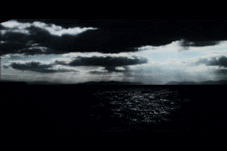
Shiho Kano
Wave
Art vidéo | dv | couleur | 18:0 | Japon | 2005
Beaucoup de beaux rayons lumineux sur la mer, rehaussés par un effet vidéo.
L'artiste est né en 1974, à Tokyo, au Japon. Après avoir été diplômé de l'Université des arts et Tokyo en 1997, il a étudié à l'Institut du forum des images de 1997 à 1999. Il réalise des films et des installations vidéos depuis 1996.
Gautam Kansara
Catalogue : 2008Grandma, Gautam, and Ghalib | Art vidéo | dv | couleur | 8:12 | Royaume-Uni, USA | 2006
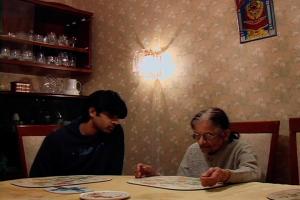
Gautam Kansara
Grandma, Gautam, and Ghalib
Art vidéo | dv | couleur | 8:12 | Royaume-Uni, USA | 2006
Dans "Granma, Gautam et Ghalib", la grand-mère de l'artiste traduit des chansons d'amour de langues Hindi et Urdu. Utilisant la première personne pour donner une interprétation passionnée des paroles, elle s'adresse souvent à Gautam comme s'il était son amant, mêlant souvenirs et expérience vécue. Le spectateur est témoin d'un déversement émotionnel d'amour et de perte où les frontières entre fiction et réalité deviennent troubles, confuses, et finalement insignifiantes.
Gautam Kansara est né à Londres en 1979 et vit à New York. Ses vidéos et photographies ont été montrées au Centro Nacional de las Artes à Mexico City, au Bronx Museum of the Arts, au Rotterdam Film Festival, au Platform Garanti à Istanbul, à la Smack Mellon Gallery et au Goliath Visual Space à Brooklyn, au Museo Nacional de Arte à La Paz, en Bolivie, aux Gallery Demain et Dukwon Gallery à Seoul, en Corée. En 2006, Gautam a reçu un "Swing Space award" du Lower Manhattan Cultural Council. Plus récemment, il a exposé au Real Art Ways, à Hartford, dans le Connecticut. Gautam enseigne également la photographie numérique et l'art vidéo au Manhattan College Department of Fine Arts.
Catalogue : 2007I'm Leaving | Vidéo expérimentale | dv | couleur | 5:51 | Royaume-Uni | 2005
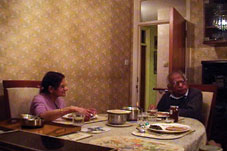
Gautam Kansara
I'm Leaving
Vidéo expérimentale | dv | couleur | 5:51 | Royaume-Uni | 2005
"I'm leaving" tourne autour de la fusion de l'humour et du sentiment lorsque le spectateur est confronté avec la perspective réitérée du grand père de l'artiste, qui continue sans cesse à faire part de son ennui, son incrédulité, et sa douleur concernant le départ imminent de Kansara. Ayant de plus en plus de de mal à entendre, son grand-père est condamné dans son propre monde, englouti dans un cycle d'incapactité d'essayer de comprendre l'inévitable. Des intentions d'apparence bonnes deviennent confuses et irraisonnées, et mettent l'accent sur les exentricités de la famille.
Gautam Kansara est né à Londres en 1979 et vit actuellement à New-York. Ses vidéos et ses photos ont été exposées entre autres au Musée d'Arts du Bronx, au Festival du Film de Rotterdam, à la Platform Garanti d'Istanbul, au Goliath Visual Space de Brooklyn, au Musée National d'Arts de La Paz en Bolivie, à la Gallery Demain et Gallery The Space à Séoul en Corée, et à la Transplant Gallery de Manhattan. Récemment le travail vidéo de l'artiste a fait parti de l'exposition inaugurale de la Mumbo Jumbo Gallery de New York City. Gautam est aussi membre de faculté du département Arts et métiers de l'Université de New York.
Eginhartz Kanter
Catalogue : 2026misdirected impulse | Film expérimental | 16mm | couleur | 2:50 | Allemagne, Autriche | 2025
Eginhartz Kanter
misdirected impulse
Film expérimental | 16mm | couleur | 2:50 | Allemagne, Autriche | 2025
Misdirected Impulse montre des paysages naturels et des parcs désertés à travers de longs plans fixes. Des arrangements pittoresques d’arbres et de buissons se déploient dans un calme silencieux, jusqu’à ce qu’une lumière fumante surgisse soudainement et rompe l’apaisement. Le staccato de plans très brefs qui suit, où la lumière se dirige autant vers la caméra que vers le spectateur, agit comme une attaque contre le regard et la perspective, dissolvant toute vision romantisée de la nature.
Eginhartz Kanter (*1984, Leipzig) a étudié les arts plastiques, les études culturelles et la photographie à l’Université d’art et de design de Linz, à l’Académie des beaux-arts de Vienne et à l’École nationale supérieure des beaux-arts de Lyon. Dans son approche artistique, il interroge les frontières et les conventions du quotidien ainsi que des environnements de vie. Ses interventions (sub)urbaines négocient des aspects du public et entretiennent souvent un lien direct avec l’architecture.
Payal Kapadia
Catalogue : 2019And What is the Summer Saying | Doc. expérimental | hdv | couleur et n&b | 23:0 | Inde, 0 | 2018
Payal Kapadia
And What is the Summer Saying
Doc. expérimental | hdv | couleur et n&b | 23:0 | Inde, 0 | 2018
Namdeo has learnt to live off the forest from his father. He stares at the treetops, searching for honey. The wind blows and afternoon descends on the small village by the jungle. Women of the village, whisper little secrets of their lost loves. Never seen, and only heard. A strange smoke emits from the ground, like a dream of a time gone by.
Payal Kapadia is a Mumbai based filmmaker and artist. She studied Film Direction at the Film & Television Institute of India. Her work deals with that which is not easily visible, hidden somewhere in the folds of memory and dreams. It is between minor, ephemeral feminine gestures where she tries to find the truth that makes up her practice. Her much acclaimed short film Afternoon Clouds was India’s sole official selection in Cannes film Festival, 2017. This year, her experimental short And what was the Summer Saying had its world premiere at the prestigious Berlin International Film Festival (2018). It also received the prestigious Special Jury Prize at the International Documentary Film Festival of Amsterdam (2018). Kapadia’s experimental short The Last Mango Before Monsoon was premiered at Oberhausen International Film Festival (2015), where she was awarded FIPRESCI award and Special Jury Prize. The film got her acclaims around the world including awards like Best Film and Best Editing at Mumbai International Film Festival (2016), Toto Award for Young Indian Artist, and Special Mention at Filmadrid.
Maria Kapajeva
Catalogue : 2023The Enforced Memory | Vidéo | 0 | couleur | 13:0 | Estonie | 2023
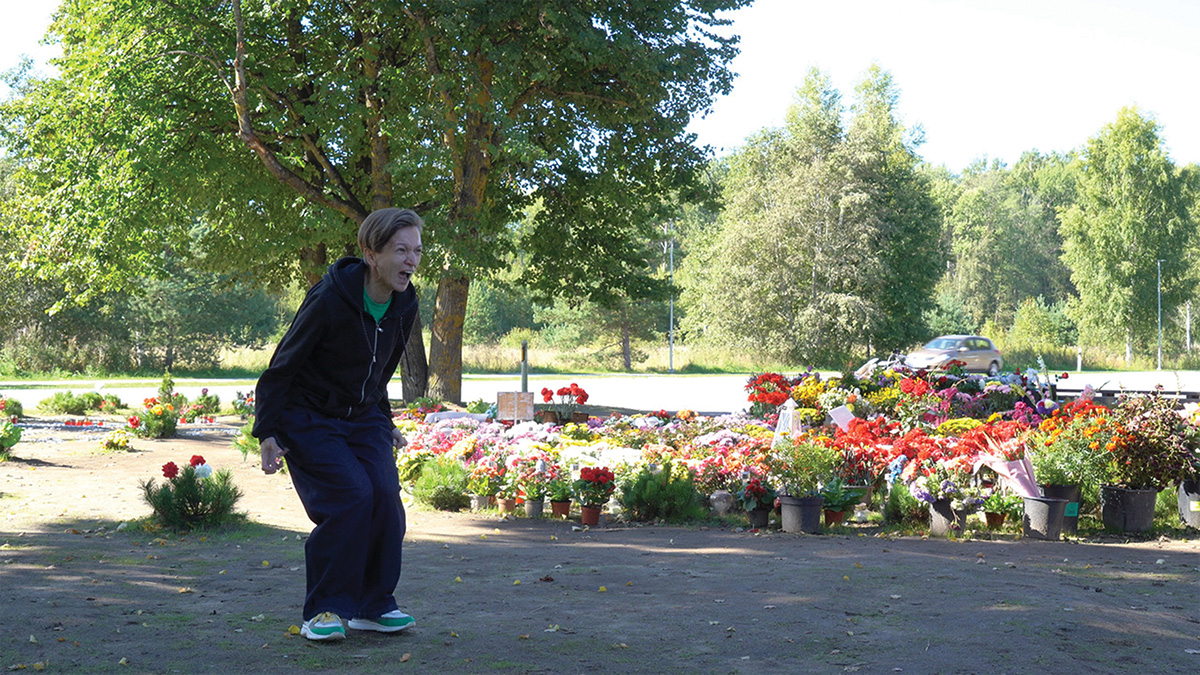
Maria Kapajeva
The Enforced Memory
Vidéo | 0 | couleur | 13:0 | Estonie | 2023
The video is an artist’s momentary personal reaction on the events of August 2022, which took place in Estonia, in Narva, Maria’s home town. Since the war in Ukraine escalated, the removal of Soviet monuments in Estonia became intensively debated topic followed by the government’s decision to demolish any Soviet attributes and monuments from the public spaces. The tank monument in Narva became a stumbling block between the views of different communities within the country. It has especially became symbolic and problematic because it stood right at the border with Russia, on a riverbank of Narva river, facing Estonia. In the final scene the artist stands on that riverbank facing Russia. As Kapajeva grew up on that border, she felt an urge to speak up about the situation with the monument. As the artist states, the video helped her not just to scream out everything what accumulated for the first half a year of the war, but, also, it helped her to regain meaningfulness in her own art practice that she lost since the full invasion of Ukraine by Russia.
Born in the Soviet Union, raised in an independent Estonia and educated in the UK, Maria Kapajeva has found herself in an involuntary position of ‘the other’ everywhere. A position, she has embraced and employs as datum in her artistic practice, leads her to explore a diverse spectrum of cultural identity and gender issues within historical and contemporary contexts. Being originally from a borderland region, border within postcolonial and post-Soviet geopolitical conditions becomes to be the core in her work. She uses various mediums, such as video, photography, textile and installations, to bring to the focus what is often left invisible or stays in peripheral vision. Kapajeva’s works exhibit internationally including some of the solo exhibitions at Estonian National Archive (2013), Estonian Museum of Art KUMU (2022), Finnish Museum of Photography (2021), Lithuanian Gallery of Photography (2020) and Tallinn Art Hall (2020). Her video works were screened at various venues and festivals including Art Viewer (2023, Spain), VAFT: Visual Art Festival (2020, Finland), Luminocity Video Art Festival (2018, Canada), Berlin Feminist Film Week (2017, Germany) and others. Her video work ‘Test Shooting’ received Runner-Up Award at FOKUS Video Art festival (2018, Denmark). Kapajeva is a member of Estonian Artists’ Association.
Philippos Kappa
Catalogue : 2007A-05 | Art vidéo | dv | noir et blanc | 0:44 | Grèce | 2006
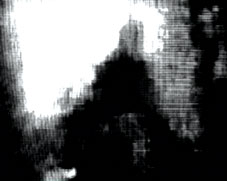
Philippos Kappa
A-05
Art vidéo | dv | noir et blanc | 0:44 | Grèce | 2006
Dans la vidéo A-05, j?ai travaillé avec les images d?une vidéo amateur prise dans un café, au moment où un kamkaze s?y faisait exploser. J?ai retiré les images qui se trouvaient avant et après l?exposion, ne conservant que le son de la séquence et ne présentant que les secondes cruciales de l?explosion. Comme une lampe s?allumant tout à coup puis s?éteignant dans le noir. Comme un flash.
1977 naissance a athènes 1996-1999 B.A Fine Art Middlesex University. Londres GB 1999-2000 M.A Fine Art Central Saint Martins College of Art and Design Londres GB
Christophe Karabache
Catalogue : 2012Wadi khaled | Doc. expérimental | super8 | couleur | 15:0 | France, Liban | 2008

Christophe Karabache
Wadi khaled
Doc. expérimental | super8 | couleur | 15:0 | France, Liban | 2008
Jason Karaïndros
Catalogue : 2008Figures | Vidéo expérimentale | dv | couleur | 4:0 | Grèce, France | 2007
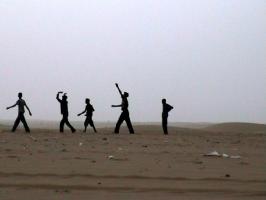
Jason KaraÏndros
Figures
Vidéo expérimentale | dv | couleur | 4:0 | Grèce, France | 2007
Synopsis Figures Dans ?Figures? on assiste à une danse de silhouettes qui évoluent lentement dans un espace dont les repères se perdent dans la brume de sable et de poussière du Sahara mauritanien. Des gamins s?agitent ; ils apparaissent et disparaissent du cadre sans nous dévoiler vraiment la raison de leur présence ou de leur rencontre. Vont-ils quelque part ? s? amusent-ils ? se disputent-ils ? ou jouent-ils tout simplement une pièce de théâtre d?ombres? Jason Karaïndros 2007
Né en 1963 à Athènes, il vit et travaille à Paris. Il a étudié l'art à l'E.N.S.B.A. de Paris dans l'atelier multimédia de Piotr Kowalski et il est également diplômé de l'École du Louvre où il a suivi une formation en histoire de l'art. Jason Karaïndros a obtenu de nombreux prix, bourses et commandes publiques, et plusieurs de ses ?uvres ont été acquises par de importantes institutions (Fond national d'art contemporain, Cité des sciences et de l'industrie, FRAC Haute Normandie). Durant cette dernière décennie, il a réalisé plusieures expositions personnelles et a participé à un grand nombre d'expositions collectives à travers le Monde (Kunstmuseum, Bergen, Norvège ; Reykjavik Art Museum, Island ; Centre d'Art Contemporain, Bunkamura, Tokyo, Japon ; Centre d'Art Contemporain de Sète ; Musée des Arts Décoratifs, Paris ). Plusieurs publications rendent compte de son travail (dont le catalogue personnel " Take Your Time ", Éd. De la Direction des Affaires Culturelles de la Mairie de Paris, textes St. Carrayrou et D. Truco, 2001). Son intérêt pour une pratique artistique prenant largement en compte les domaines de la science et de la technologie l'a amené à travailler avec les techniques multimédias et à enseigner depuis 5 ans à l'École Régionale des Beaux-Arts de Rouen.
Irini Karayannopoulou
Catalogue : 2007My room | Animation | dv | couleur | 2:27 | Grèce | 2006
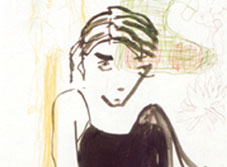
Irini Karayannopoulou
My room
Animation | dv | couleur | 2:27 | Grèce | 2006
Je chante et je crie et je fais ce que je veux dans le paradis de ma chambre. C'est ma chambre. Ces trésors fascinants vont te séduire. C'est ma chambre. Et je veux te faire rentrer.
Irini Karayannopoulou lives and works in Athens, Greece.
Irini Karayannopoulou
Catalogue : 2011immaterial: 1 film 22 soundtracks | Animation | dv | couleur et n&b | 2:0 | Grèce | 2010
Irini Karayannopoulou
immaterial: 1 film 22 soundtracks
Animation | dv | couleur et n&b | 2:0 | Grèce | 2010
In Immaterial, sharp angled stars, magicians? hats and supernatural landscapes transform perpetually into fantastic abstractions. Based entirely on works on paper, IK s manic animation reveals disparate elements thrown together as if they were meant to be. Like a vision emerging from the mist, this dazed mix of enigmatic scenes engages the spectator in a particularly addictive way. The film s aggressively seductive, constantly changing forms can be compared to a succession of suspended dreams. Yannis Saxonis? music (1 film, 22 soundtracks) envelopes into a familiar yet surprisingly improbable environment with its own unique, undefined logic. As well as, it determines and transforms in a mysterious, almost alchemical way, the impact of images, enriching it at the same time with a metaphysical notion; -as if it was all exercised in a cosmic dimension, in 22 different ways.
Irini Karayannopoulou (born 1973 in Thessaloniki) lives and works in Athens, Greece. Her work consists of video animation, painting, drawings and music (that is, of course, when Yannis Saxonis -who composes the music for most of her video works- allows her to. IK is represented by Ileana Tounta Contemporary Art Center and Lola Nikolaou gallery.
Catalogue : 2008Boys | Animation | dv | couleur | 3:45 | Grèce | 2007

Irini Karayannopoulou
Boys
Animation | dv | couleur | 3:45 | Grèce | 2007
For her video BOYS, Irini Karayannopoulou sticks to her Old -Skool- DIY- Drawings- Only- Animation- Method in an attempt to illustrate her own cover version of Sabrina s 80 s hit "Boys". In the video, the heroine,- a little girl with a murderous desire for love- drinks cocktails in a swimming pool, takes her bikini off, rides a crocodile, wets her 18 th century bed, flirts with super hero Joseph Beuys and after all "she`s looking for a good time..."A copy of BOYS was stolen during Athens Artfair, most probably by a group of ultra conservative let`s say art lovers who were extremely shocked by its content.....
Irini Karayannopoulou is a visual artist;she studied Fine Arts in Saint Etienne, France. Her work has been shown in solo shows and major art fairs in Greece, Italy, France, Germany, Sweden, Switzerland, Egypt, USA... She lives and works in Athens and Skopelos island.